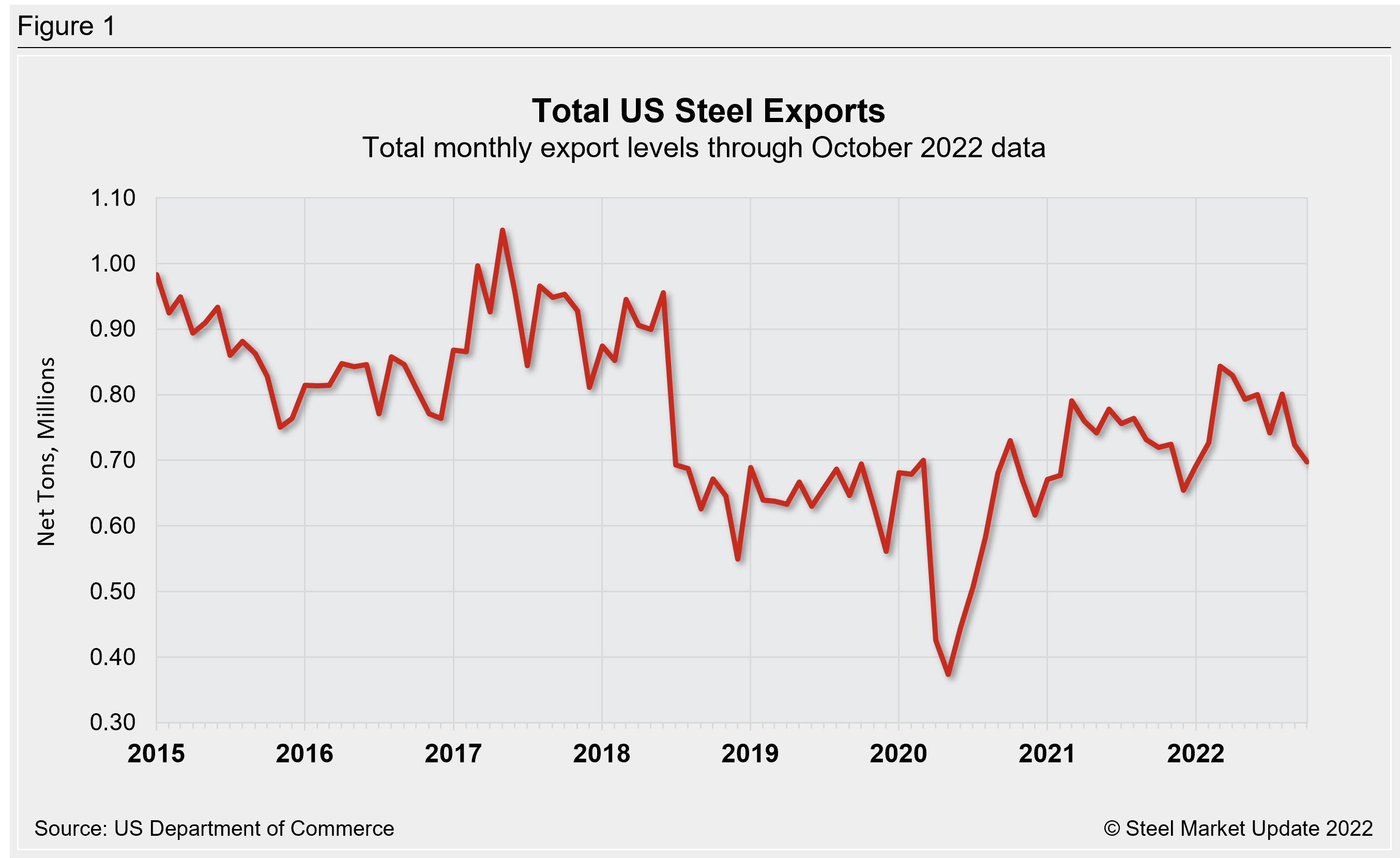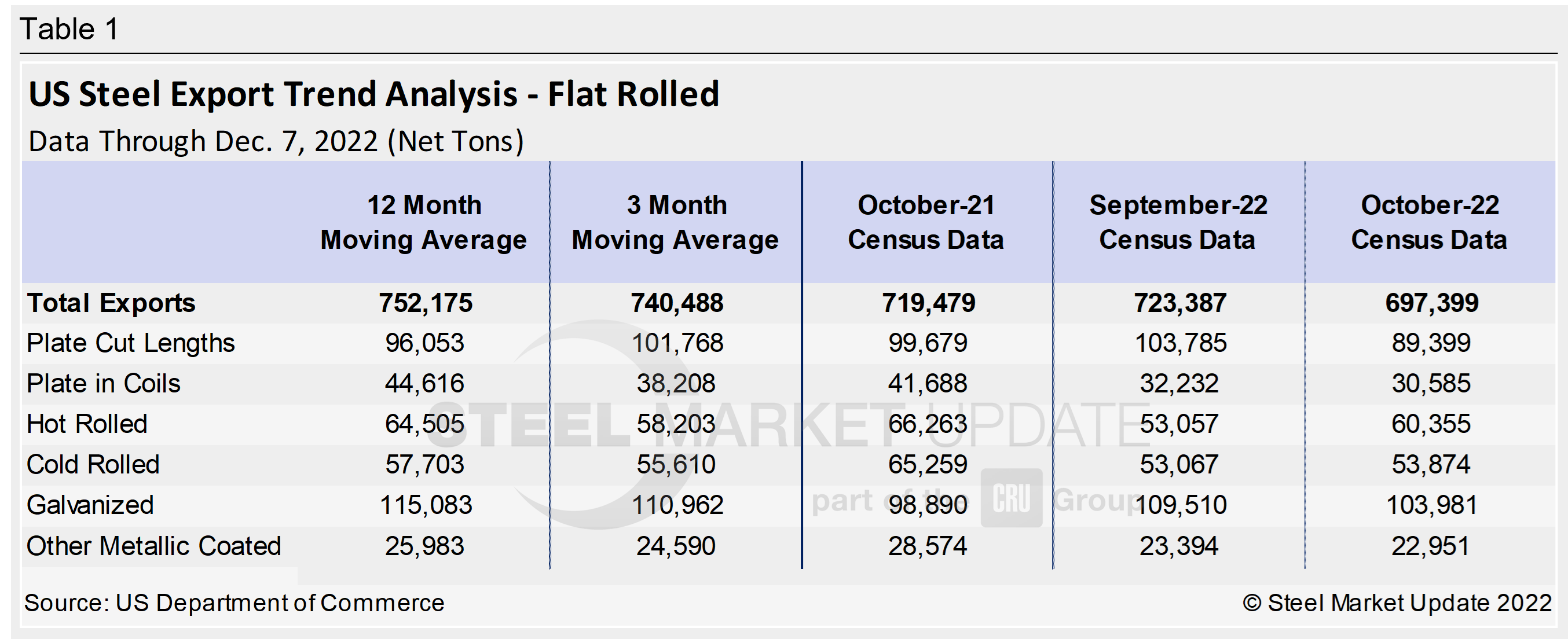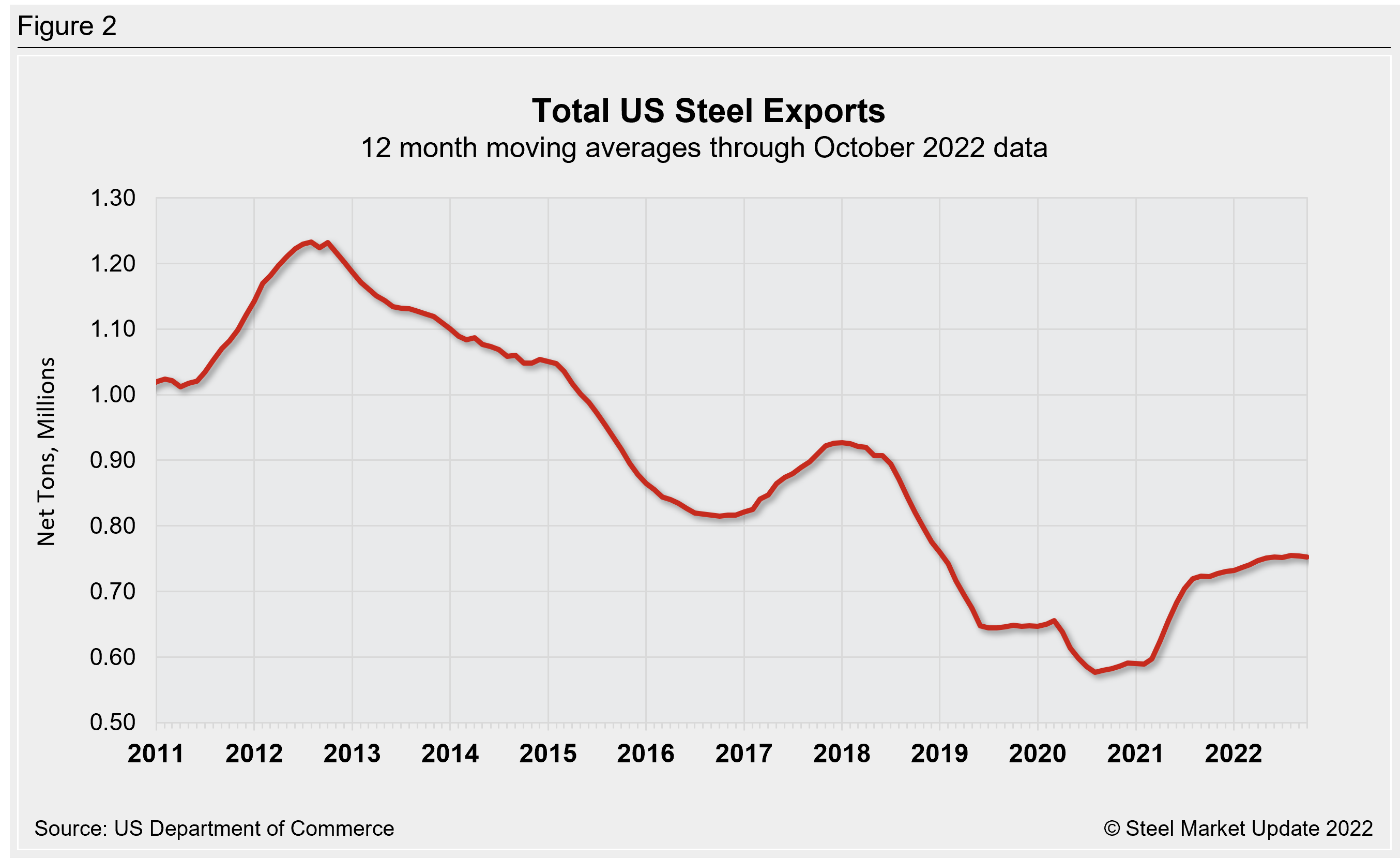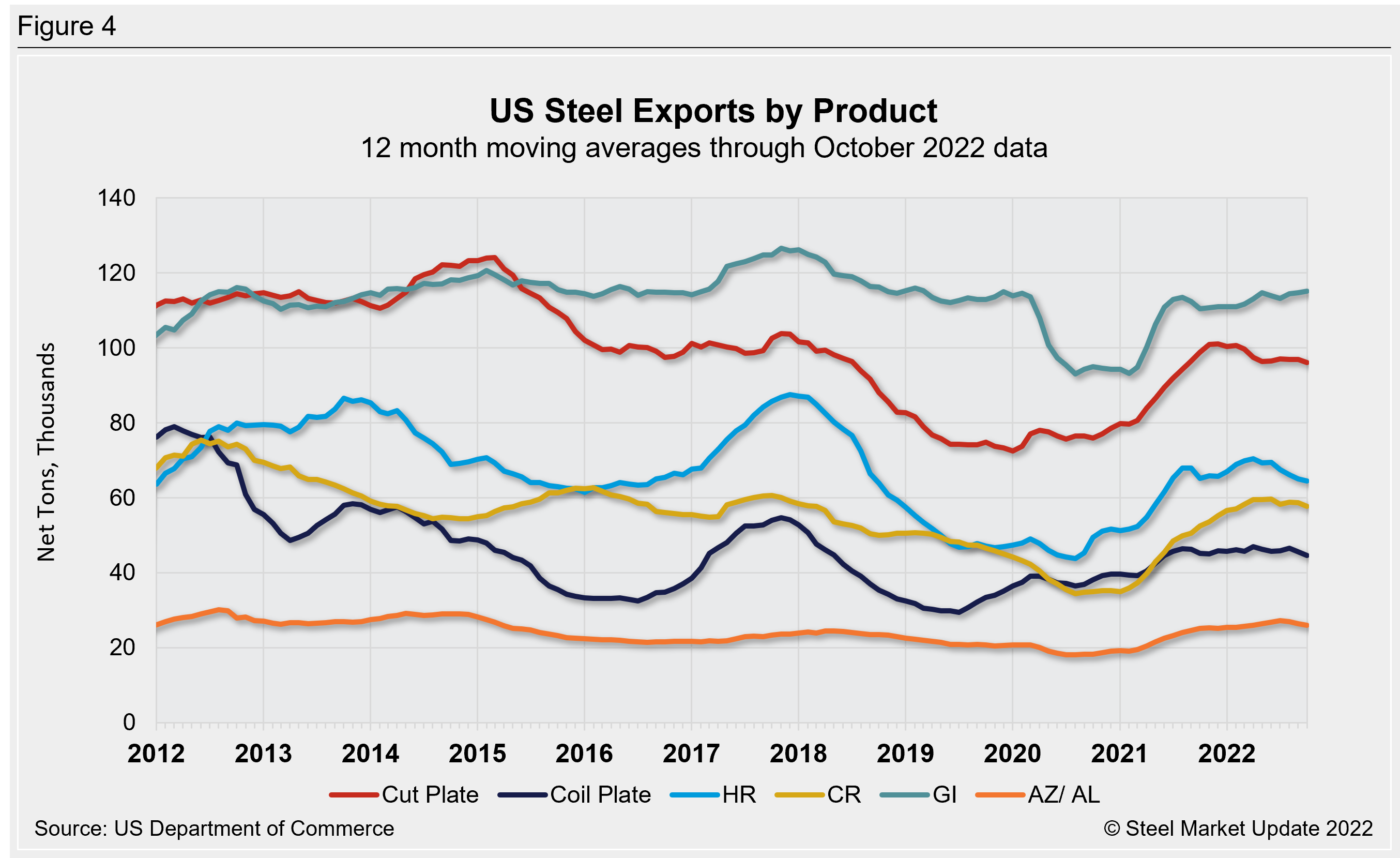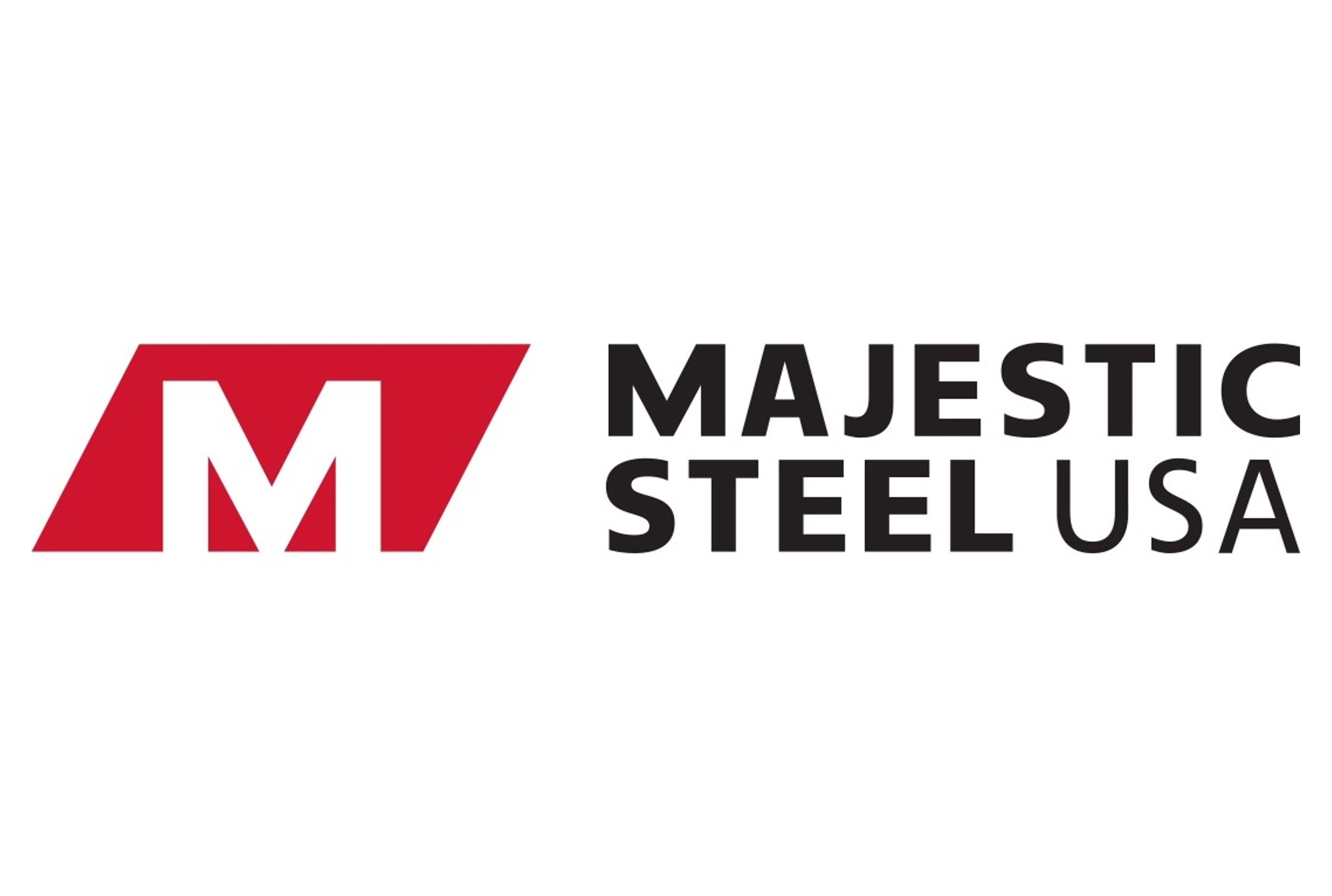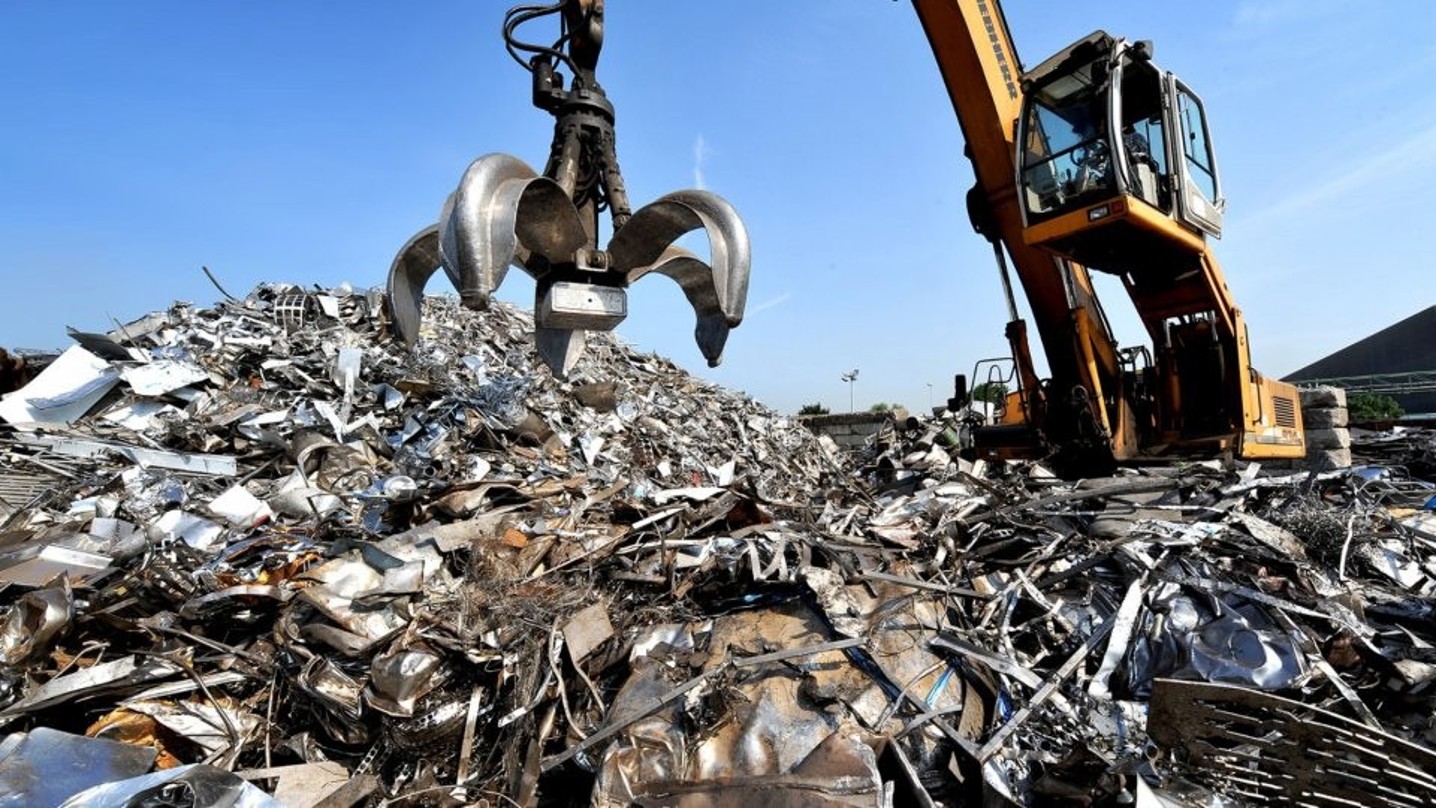Analysis

December 13, 2022
US Steel Exports Decline Further in October
Written by Brett Linton
US steel export volumes eased further from September to October, falling 4% to 697,000 net tons, according to the latest US Commerce Department data. Exports are now at a nine-month low, with October being the third slowest month of trade over the past 20 months. Exports have trended downwards since peaking in March and April of this year. October 2022 exports are 3% lower than levels seen one year prior, 4% less than October 2020, and in line with October 2019 volumes.
In comparison to recent years, export levels had remained relatively high for the majority of 2022, as shown in Figure 1. The highest monthly figure seen in the past four years was in March 2022 at 843,000 tons. The highest level recorded in the chart below was 1.05 million tons in May 2017, and the highest monthly rate in our history was January 2012 at 1.32 million tons. Recall that in 2020, steel exports fell to a 24-year low of 374,000 tons in May.
Of our six monitored product groups in Table 1, four declined month-over-month (MoM), while two increased.
On a year-to-date (YTD) basis, total steel exports for the first ten months of 2022 now average 765,000 tons per month. This is up from a monthly average of 739,000 tons in the same period of 2021, an average of 580,000 tons in 2020 YTD, and an average of 658,000 tons in 2019 YTD.
On a 12-month moving average basis (12MMA) through October, exports for the past 12 months now average 752,000 tons (Figure 2). Recall the August 2020 12MMA multi-year low of 577,000 tons. Total exports averaged 731,000 tons per month in 2021 compared to 591,000 tons in 2020; 648,000 tons in 2019; and 775,000 tons in 2018.
Total October exports were 6% below the 3MMA (average of August through October 2022), and 7% below the 12MMA (average of November 2021 through October 2022). Here is a detailed breakdown by product:
Cut-to-length plate exports declined 14% MoM to 89,399 tons in October, down 10% compared to levels one year prior.
Exports of coiled plate were 30,585 tons in October, down 5% from the prior month and down 27% versus October of last year.
October hot-rolled steel exports increased 14% from September to 60,355 tons, down 9% compared to volumes one year ago.
Exports of cold-rolled products were 53,874 tons in October, up 2% MoM, but 17% lower than the same month last year.
Galvanized exports in October were 103,981 tons, down 5% compared to September but up 5% year-over-year.
Exports of all other metallic-coated products decreased 2% MoM to 22,951 tons. Compared to levels one year ago, October was down 20%.
Figures 3 and 4 show US exports by product, both monthly levels and on a 12MMA basis.
We have an interactive graphing tool available on our website here. Readers can further investigate historical export data in total and by product. If you need assistance logging into or navigating the website, contact us at Info@SteelMarketUpdate.com.
By Brett Linton, Brett@SteelMarketUpdate.com



